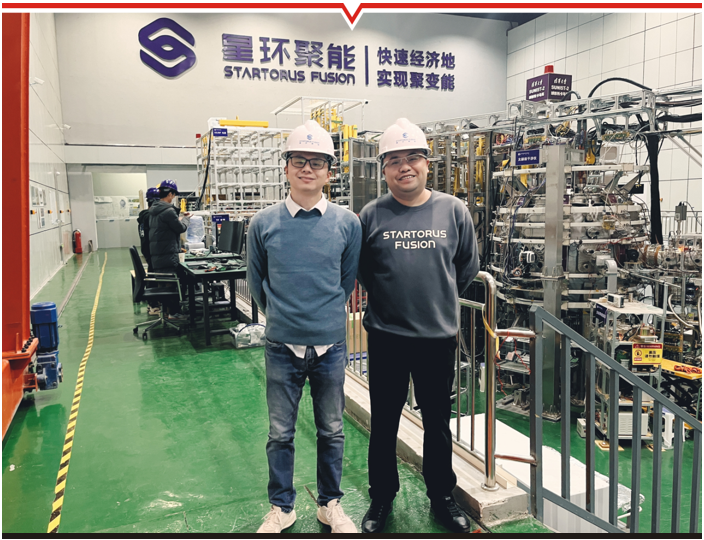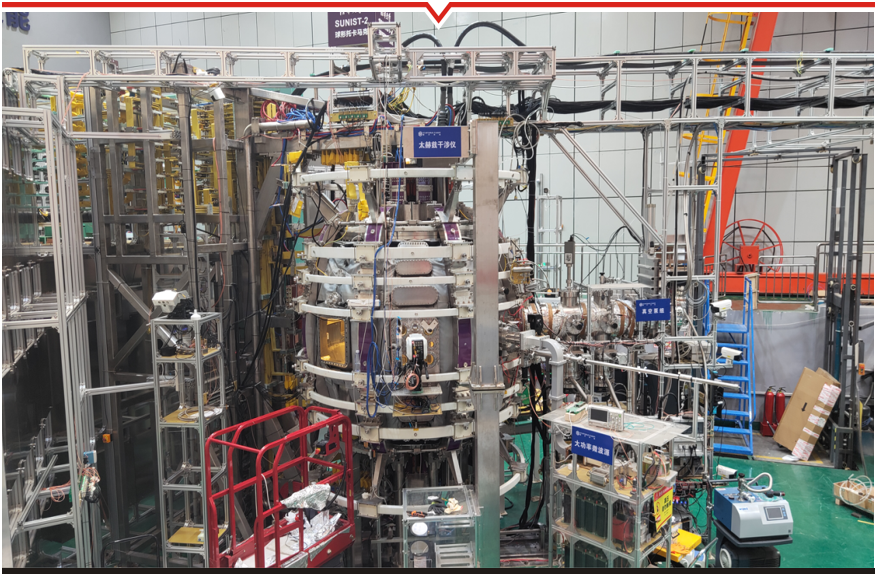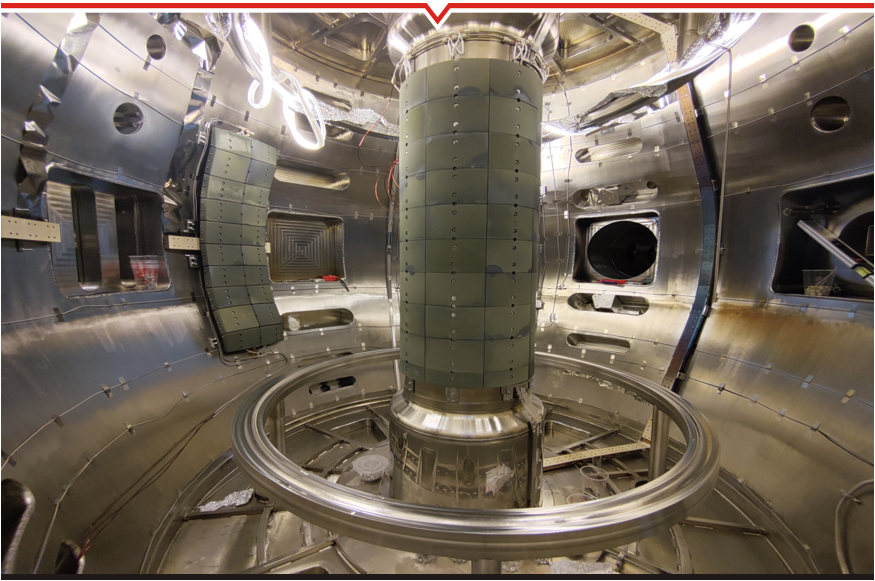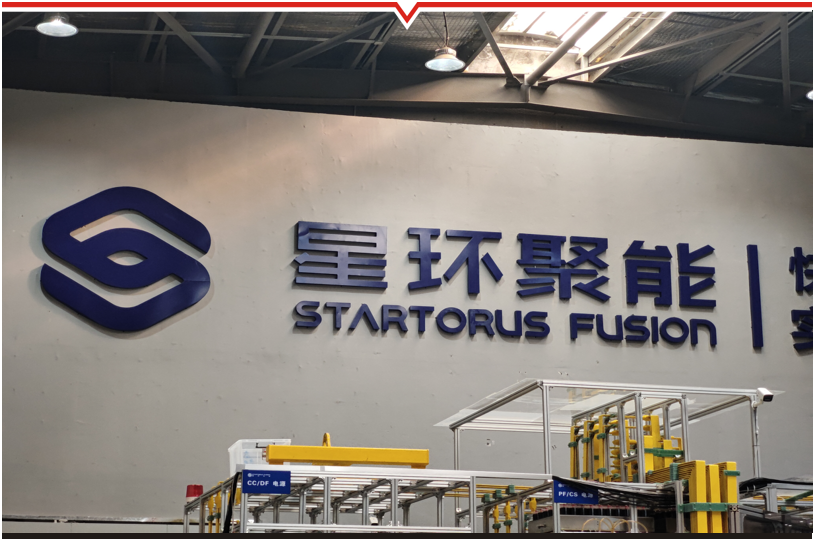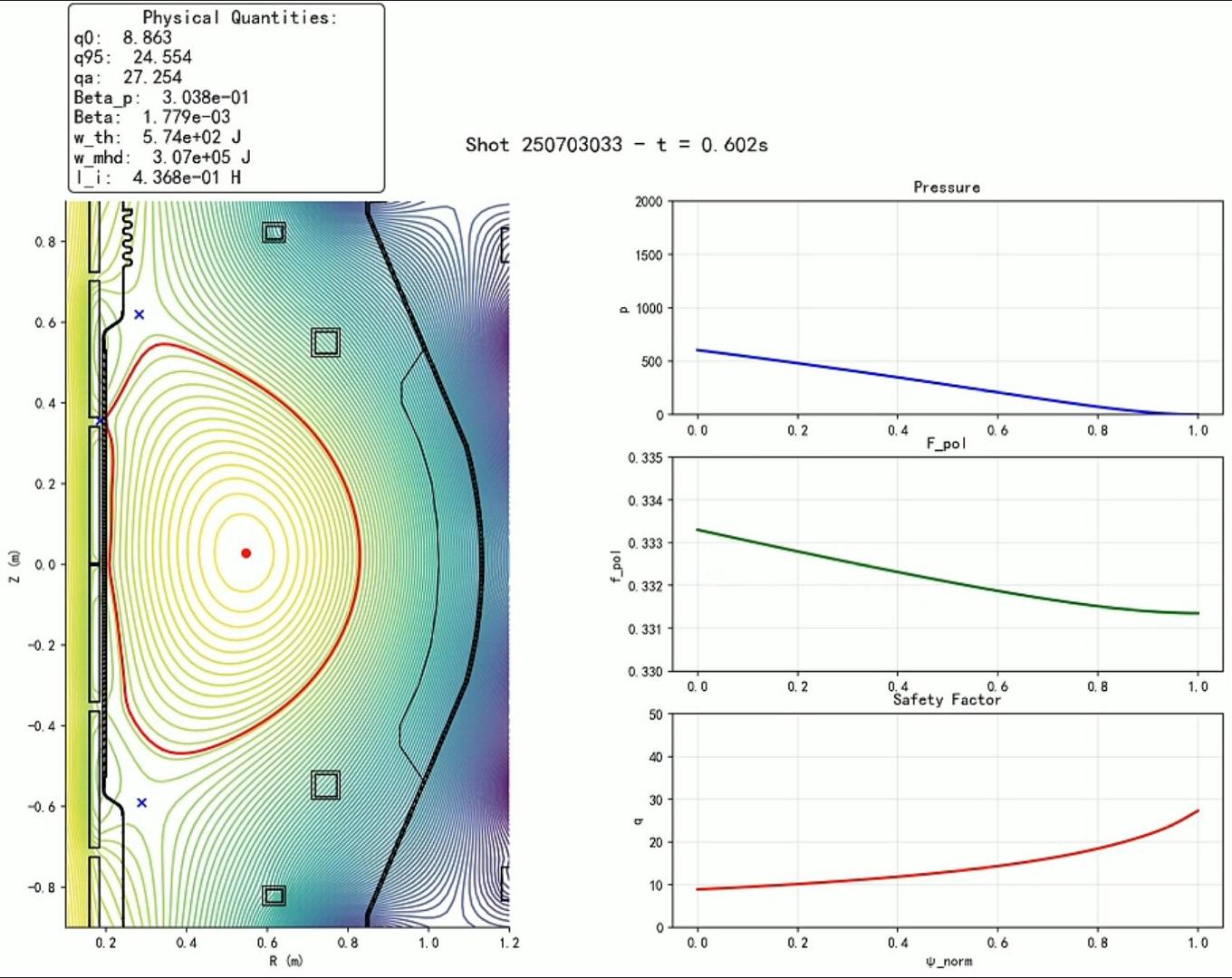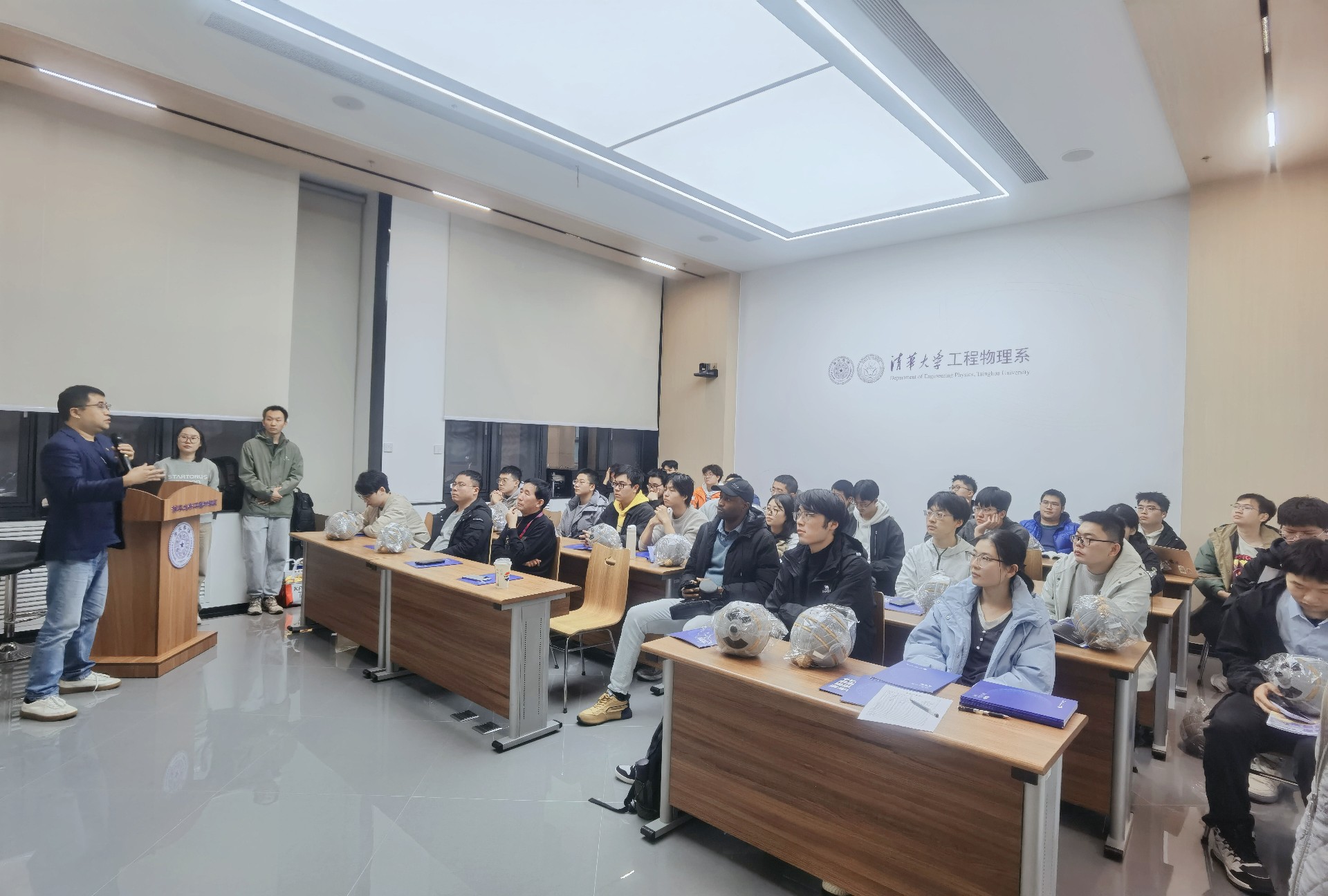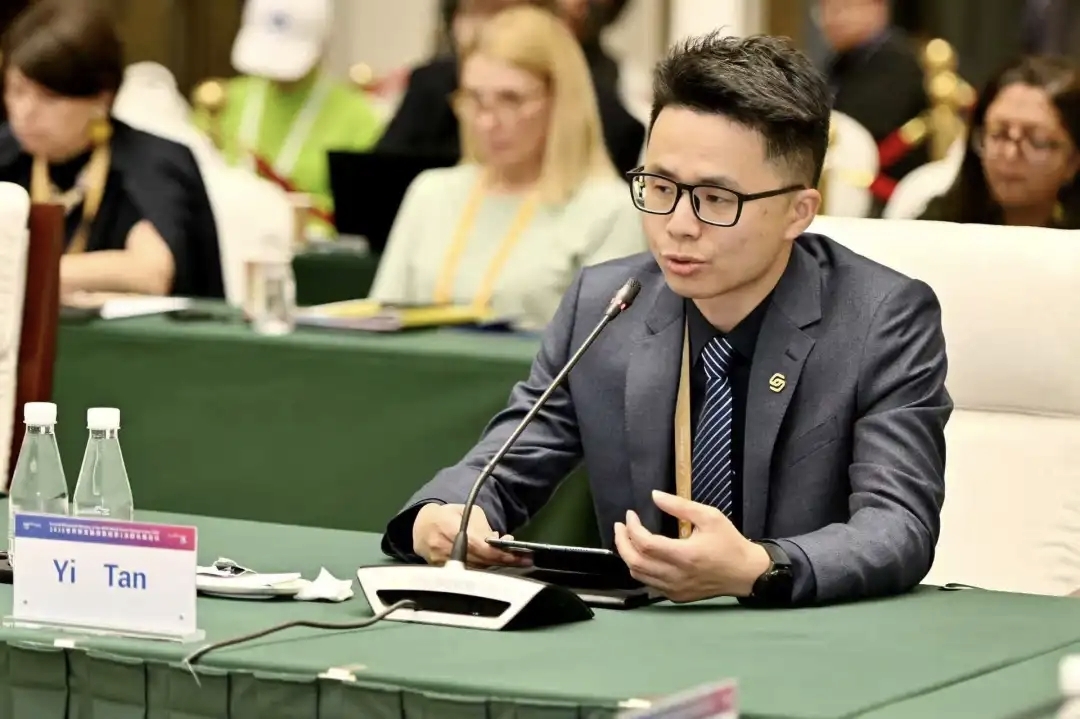Startorus Fusion Featured in Hao Jing Notes' "Discovering Western Science and Technology Innovation Power" Column. Recently, Hao Jing Notes' column - "Discovering Western Science and Technology Innovation Power" featured a headline report on Startorus Fusion. The columnist from Hao Jing Notes visited the controlled nuclear fusion experimental device SUNIST-2, jointly developed by Startorus Fusion and Tsinghua University, and had an in-depth conversation with Chen Rui, the founder of Startorus Fusion regarding the current status and future development of controlled nuclear fusion.
The full article of the report is as follows:
Extra! Tsinghua University Team’s Mysterious Research and Development in Xi'an
Approximately two months ago, Bilibili released its five major scientific focuses for 2023, with controlled nuclear fusion prominently featured among them. In the field of nuclear energy applications, controlled nuclear fusion holds the highest scientific accolade compared to the nuclear fission commonly used in nuclear power plants. Not only does controlled nuclear fusion possess higher energy density, but it also produces virtually no nuclear radiation, making it a clean energy source. Due to its similarity to the workings of the sun, controlled nuclear fusion is often referred to as the "artificial sun."
However, for a long time, controlled nuclear fusion has been regarded as a game of "delay", with the question of "another fifty years to go".
In recent years, the situation has been changing: massive amounts of funding have poured into the controlled fusion industry, commercial fusion companies in various countries have made continuous progress, and they have even driven the development of upstream companies in the industry chain. A report from the Fusion Industry Association (FIA) indicates that out of the over 40 commercial controlled fusion companies surveyed, 25 believe that fusion reactors will achieve grid-connected power generation before 2035.
In the autumn of 2021, a team from Tsinghua University settled in Xi'an and presented a detailed plan: to validate the feasibility of the preliminary solution by early 2024, construct a new generation device from 2024 to 2027 to thoroughly verify the engineering feasibility of the solution, and then proceed with the construction of a commercial demonstration reactor.
In early December, Hao Jing Technology (ID: Hao-keji) visited a company called Startorus Fusion to witness the SUNIST-2 experimental device jointly developed by Tsinghua University and Shaanxi Startorus Fusion Technology Co., Ltd. They also had an in-depth conversation with the founder, Chen Rui, about the present and future of controlled nuclear fusion. Is there a chance for the "artificial sun" to rise in Xi'an?
1.Forever fifty years: The elusive quest for controlled nuclear fusion
In the autumn of 1999, as the weather in Beijing gradually cooled, the two founders of Startorus Fusion, Chen Rui and Tan Yi, met. They both entered the Department of Engineering Physics at Tsinghua University. At that time, Tsinghua's spherical tokamak device for controlled nuclear fusion, SUNIST, had not yet been completed.
Controlled nuclear fusion has always been considered an elusive goal for the world, often described as "the eternal fifty years." This is primarily due to the demanding conditions required for nuclear fusion reactions.
Nuclear fusion is the process of combining two lighter atomic nuclei into a heavier nucleus, releasing energy in the process. On Earth, the fusion reaction that is most easily achieved occurs between isotopes of hydrogen-deuterium and tritium. Similar fusion reactions occur constantly in the Sun, providing almost all the energy needed by humanity.
Figure 1. Constant Nuclear Fusion Reactions Occurring on the Sun
Hence, controlled nuclear fusion is also known as the "artificial sun". However, controlling the sun is no easy task. To induce controlled nuclear fusion reactions on Earth, the temperature of the burning plasma needs to exceed 100 million degrees Celsius. Yet, the highest known melting point of any substance on Earth is only capable of withstanding temperatures up to 4215 degrees Celsius, which falls short of the requirements for nuclear fusion reactions.
In other words, we do not have a "boiler" that can withstand the conditions of nuclear fusion reactions. However, the energy density of controlled nuclear fusion is incredibly enticing, as the energy produced from less than a hundred metric tons of fuel would be sufficient for human consumption for an entire year.
In pursuit of this goal, scientists have racked their brains and finally devised a solution: suspending the fuel in the middle of the reactor, without it coming into contact with the inner walls. In the 1950s, Soviet scientists invented a highly efficient controlled nuclear fusion device, which later became the mainstream route for commercial fusion companies: the tokamak/spherical tokamak.
In recent years, there have been significant breakthroughs in nuclear fusion technology. According to the website of the American magazine "Newsweek," private investments in the field of nuclear fusion skyrocketed in 2022, surpassing the cumulative investment total of previous years. Additionally, numerous companies worldwide have unveiled ambitious engineering plans.
Currently, there are three types of controlled nuclear fusion reactors globally:
International large-scale facilities formed through multinational collaboration, such as the renowned ITER, which is currently the world's largest tokamak device; National facilities established independently by various countries, such as the NIF in the United States, EAST and HL-3 in China; Commercial controlled fusion companies that have rapidly emerged in recent years, operating outside the national programs.
During Tan Yi's junior year, Tsinghua University completed the construction of China's first spherical tokamak device. Due to a series of fortuitous circumstances, Tan Yi became a member of the operating team for this device. However, controlled nuclear fusion remained a distant prospect, and at that time, he never imagined the current wave of commercialization.
2.Now or never
It took Tan Yi many years to transition from the concept of "the forever fifty years" to the current era of commercial fusion companies. There was once an investor who pointed to Startorus Fusion's equipment and exclaimed, "Within it is the culmination of Professor Tan's lifelong learning."
In 2003, Tan Yi obtained his Bachelor's degree in Nuclear Engineering and Nuclear Technology from Tsinghua University. Afterwards, he continued his studies, conducted research, and taught at Tsinghua, leading a routine life where he solved problems as they arose.
The Tsinghua team, led by Tan Yi, gradually developed various supporting systems for the tokamak, including high-power supply systems, cooling water circulation systems, signal acquisition systems, and integrated control systems.
Joking about Tan Yi's journey, Chen Rui said, "We were poor; we did everything ourselves. They've only spent a few million over the past twenty years." It is worth noting that in the field of nuclear fusion, investing hundreds of millions or even billions of yuan is normal.
However, it was in 2016 that Tan Yi first felt this endeavor was feasible. At that time, breakthroughs were being made in the second-generation high-temperature superconducting tapes, and nuclear fusion teams from abroad were also emerging, which gave Tan Yi confidence.
Through the development of relevant technologies during their operation of the tokamak at Tsinghua University, Tan Yi, Chen Rui, and another Tsinghua alumni, who had previously incubated a company specializing in sound-based machine fault detection, have already achieved annual revenues in the hundreds of millions. Therefore, starting from 2018 and 2019, they began to wonder, "If companies focused on the commercialization of fusion-related technologies can succeed, is it possible to pursue fusion itself?"
Figure 2. Tan Yi (on the left) and Chen Rui (on the right)
This idea gradually matured through discussions, but the question remained: where would the money come from?
The path of national scientific research funding was not feasible because the majority of the related funds were allocated to the powerful Plasma Physics Institutes and the Southwest Institute of Physics, both of which are national teams researching controlled nuclear fusion.
While overseas, the "forever fifty years" curse that had shrouded the field was gradually being broken by capital, with venture capital pouring into the nuclear fusion industry. Among them were well-known figures such as Bill Gates and Sam Altman, the founder of OpenAI, who invested in related companies.
Chen Rui said that at that time, they felt a sense of urgency, as the progress made by the CFS team at MIT in the United States was indeed rapid. He believed that "Tan Yi's approach is very cool and has advantages. It is possible to compete with Europe and the United States and achieve results faster."
There was no more time to waste. Chen Rui and Tan Yi were left with only one path: commercialization.
Unlike Tan Yi, who immersed himself in nuclear fusion, Chen Rui went to Sydney to pursue a PhD in Economics after graduating from university. In 2013, he returned to China and became a professor at the Central University of Finance and Economics. He often went to Tan Yi for help with code issues related to quantitative trading and jokingly said, "Tan Yi is the best coder in the field of nuclear fusion."
When the timing was right, at the crucial crossroads of entrepreneurship, Chen Rui decided to quit his job and go all-in. In the autumn of 2021, Startorus Fusion was established.
In June 2022, Startorus Fusion took the most important step towards commercialization by securing several hundred million yuan in funding from multiple investment institutions. These institutions included CAS STAR, which focuses on deep tech and is known for investing in cutting-edge technologies, as well as Shunwei Capital, Kunlun Capital, MSA Capital, Unity Ventures, and Sequoia Seed Fund, among other well-known organizations.
3.The Tsinghua team’s decision to establish roots in Xi'an
Hao Jing Technology arrived at the zeroth experimental site of Startorus Fusion located in Gaoling on December 1st. Here, they had the SUNIST-2 installed, a controlled nuclear fusion experimental device worth hundreds of millions of dollars jointly built by Tsinghua University and Startorus Fusion. It was during the lunch break at the time, and we walked through the office area, put on our safety helmets, and then saw that spherical steel structure.
The sphere was surrounded by intricate coils, with the most prominent being the white coils in the horizontal direction and eight purple coils in the vertical direction. The sphere itself was a vacuum chamber, with a cylindrical structure running through its poles. This is a spherical tokamak, which is one of the most commonly used designs among commercial teams pursuing controlled nuclear fusion worldwide.
Figure 3. The first-generation experimental device of Startorus Fusion- SUNIST-2
Tokamak is a term derived from the Russian language, and it refers to a toroidal vacuum chamber with electromagnetic coils. When it operates, varying currents are passed through the coils to generate a strong magnetic field, which confines the plasma (fuel) within the vacuum chamber.
The cool concept that impressed Chen Rui will undergo initial verification here. Before sharing this concept with everyone, there is some basic knowledge about nuclear fusion that needs to be explained:
To achieve nuclear fusion on Earth, the fuel needs to be heated to over 100 million degrees Celsius. At this temperature, the atomic nuclei and electrons of the fuel separate, forming a mixture of atomic nuclei and electrons known as plasma.
At such high temperatures, the particles in the plasma become extremely active, and the atomic nuclei collide and merge in a frenzied manner. This is how nuclear fusion reactions occur. During this process, the overall mass of the matter decreases, and the lost mass is released in the form of energy (according to the mass-energy equivalence equation: E=mc²).
On the surface, nuclear fusion seems simple—just heat it up. However, it's important to note that the core temperature of the Sun is only around 20 million degrees Celsius, which means it's like putting a hotter sun inside a boiler (tokamak) to heat it up.
Figure 4. The interior of the SUNIST-2 experimental device
Taking a closer look at the technological approach of Startorus Fusion: they employ magnetic confinement to contain the plasma, allowing it to float in the air without touching the walls of the vacuum chamber. Simultaneously, they use magnetic reconnection to heat the plasma, which can be understood as a form of self-heating.
What sets them apart from other technologies is that Tan Yi drew inspiration from automotive engines. Instead of following the traditional approach of "sustaining high-temperature plasma for a long time", they allow the plasma to naturally dissipate and then reignite it.
Chen Rui describes this process as follows: "It's like an engine, but each time I add only a little gasoline, burn it to generate energy, clean up the ashes a bit, and then add a little more gasoline." By repeating this process, the "car" keeps moving forward.
However, the current SUNIST-2 is only a preliminary verification of the feasibility of this approach. It simply needs to demonstrate the complete operational process and heat the plasma to 17 million degrees Celsius through magnetic reconnection to fulfill its historical mission. It is reported that a total investment of 150 million RMB has been made in the device so far, including site renovation and team operations.
Startorus Fusion plans to thoroughly validate the engineering feasibility of the approach with their next-generation device, CTRFR-1, achieving plasma output energy greater than input energy, i.e., Q>1. The budget for the next-generation device has increased to 1 billion RMB.
4.Beyond the boundless sea of stars
During the hour-long conversation with Chen Rui, Hao Jing Technology asked numerous questions about technical details. The topics veered off course countless times but were repeatedly brought back on track by Chen Rui, saying, "Let's continue with that question." Chen Rui's logical thinking, characteristic of an engineering mindset, was fully evident.
Throughout the discussion, the most profound realization was that nuclear fusion is akin to a primordial tree of technology. It seems that any branch taken from it has the potential to grow into a towering industry. And this is precisely the potential path to commercialization beyond the boundless sea of stars for Startorus Fusion.
Chen Rui shared with Hao Jing Technology the current and potential revenue streams.
The SUNIST-2 device is equipped with numerous sensors, and converting the sensed information into electrical signals is no easy task. This is due to the complex electromagnetic environment within the relatively small space of over 100 square meters, which includes high-power electrical sources and magnetic induction currents from various directions. To achieve this, the signal acquisition system possesses significant technological barriers.
In real-world scenarios, there are similar situations, such as rocket launches and missile warheads. This market segment remains relatively untapped, presenting an opportunity for Startorus Fusion to enter. Currently, they have generated revenue in the millions. However, Chen Rui acknowledged that this market segment is not substantial compared to the funding requirements of nuclear fusion, which easily reach billions.
Furthermore, their high-power electrical source system and the high-temperature superconducting magnets to be installed in the next-generation device have distinct applications and may become a revenue source on the journey towards nuclear fusion.
At the same time, Chen Rui mentioned that the investors are quite professional and have not imposed strict investment terms on Startorus Fusion. They are more concerned about the technical roadmap and team composition. However, the company should have the ability to sustain itself while waiting for funding, ensuring the team's stability, and that would be sufficient for investors.
However, in the vast sea of controlled nuclear fusion, Startorus Fusion is not the only commercial company making efforts. Countries around the world have long engaged in fierce competition.
For example, Helion Energy, established in 2013, has secured hundreds of millions of dollars in funding, including from Sam Altman of OpenAI. They have also entered into a Valuation Adjustment Mechanism with Microsoft to build the first fusion power plant by 2028.
Regarding the ultimate question of when fusion power generation will be realized, a considerable number of fusion companies anticipate achieving fusion grid connection before 2035. Chen Rui's response is similar, with Startorus Fusion aiming to at least demonstrate a commercial fusion reactor around 2030. "Currently, all teams worldwide are in the stage of verifying the engineering feasibility of their approaches."
Chinese Academy of Engineering academician Li Jiangang, on the other hand, expressed a more definitive statement, saying, "Within less than 10 years, you will definitely see a light shining in Hefei, China, powered by nuclear fusion."
(source:Startorus Fusion、VCG)
writing丨Ruobin Li
editing丨Moban Liao


